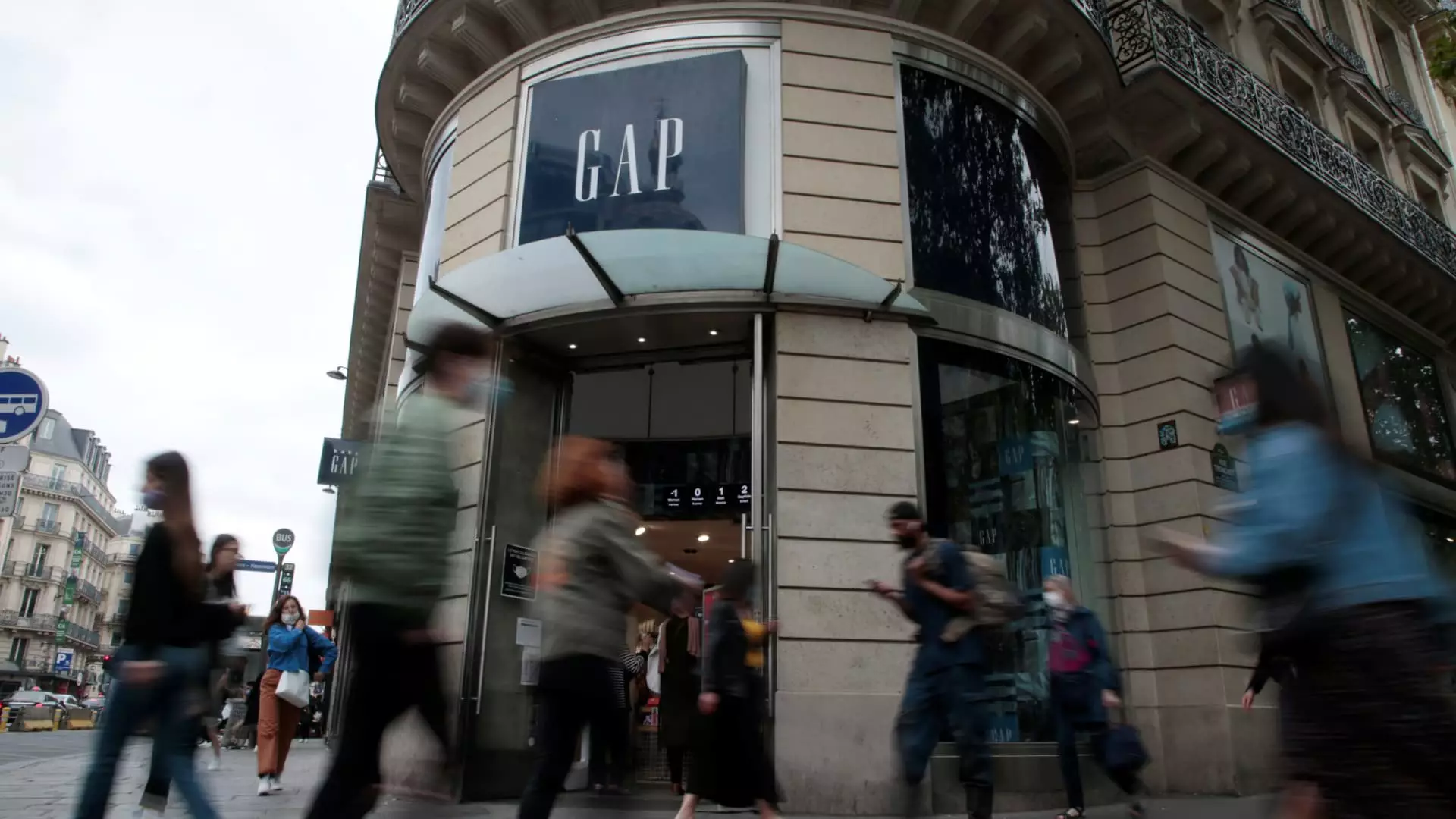As Gap attempts to navigate the tumultuous waters of the current economic landscape, new tariffs implemented by the U.S. government are turning out to be a formidable storm in the company’s path. According to recent announcements, these tariffs could cost the company between $100 million to $150 million, significantly jeopardizing its financial strategy. The apparel giant had originally hoped that a robust turnaround plan, spearheaded by CEO Richard Dickson, would reposition Gap as a dominant player in the saturated retail market. However, the imposition of a 30% tariff on imports from China and a 10% levy on imports from several other countries are casting dark shadows over Gap’s optimistic projections. This cannot merely be viewed as a minor inconvenience; it represents a serious threat to a brand already struggling for relevance.
In the wake of the fiscal first-quarter earnings reports, Gap’s shares plummeted over 15% during after-hours trading—a stark reminder of how market sentiment can shift dramatically in response to external pressures. Despite the recent earnings beat that saw revenue hit $3.46 billion, the looming financial drain from tariffs has raised flags across the industry regarding Gap’s future performance. Fiscal projections that do not account for these tariffs are, quite simply, neglecting a significant variable that could destabilize the company in the latter half of the year.
Mitigating Measures: A Double-Edged Sword
Gap’s intention to mitigate tariff impacts is commendable but brings forth skepticism over whether these measures will do enough. The leadership claims to have already reduced potential costs by about 50%, primarily through diversifying the supply chain—an attempt that includes a pivot toward U.S.-sourced cotton. Such steps reflect a positive move toward creating a more resilient business model. Still, one has to wonder: is this corporate maneuvering enough to counteract the adverse effects of tariffs?
Critically, Dickson has expressed confidence that price hikes would not significantly burden consumers. However, this assertion feels overly optimistic given the evidence at hand. The retail landscape is unpredictable, and consumers are already feeling the squeeze of inflation and increased living costs. While the clothes might appear affordable at first glance, undercurrents pushing prices upward can’t be dismissed lightly. This assurance of stability from leadership may ring hollow with a consumer base increasingly wary of spending due to economic conditions.
The Competitive Landscape: A Balancing Act
Even while tariffs loom, Gap’s performance metrics indicate a few areas of success, particularly in the Old Navy brand. With sales growth reported at 3% and a concerted effort to drive brand visibility through marketing campaigns, Old Navy is playing an essential role in sustaining the Gap franchise. However, these shards of success feel more like flickers in a broader storm. The company’s flagship brand, Gap itself, has also seen positive traction, largely due to innovative offerings and a refreshed marketing strategy aimed at reviving interest.
On the flip side, brands like Banana Republic and Athleta are struggling, highlighting a more concerning underlying issue. While Gap is focusing on revamping these labels, progress appears painstakingly slow in a competitive landscape where consumer loyalty can pivot almost overnight. Athleta’s major facing downward drift for sales also begs attention—if adjustments aren’t made, Gap risks alienating an entire customer segment. The inherent value of the brand is being tested during a pivotal moment; without a firm grasp on what consumers genuinely want, these brands may slip further into obsolescence.
A Political Undertow
The business environment is inextricably linked to political decisions, and the ramifications of tariffs extend beyond mere economics. The policies driving these increases reflect a broader trade war with potential adversities for many American companies. For Gap, distancing itself from China has become a pressing necessity, yet the complexities of diversifying production underscore a fundamental challenge facing the American retail sector.
As Dickson tries to reinvent Gap amidst trade barriers, there’s an urgent abstraction: resilient brands in today’s landscape must adapt swiftly. The ability to pivot effectively in response to government actions determines sustainability. It’s not just about cutting costs or changing suppliers—it’s about evolving a brand ethos that resonates with consumers while navigating a fraught political climate.
In the end, Gap is challenged not only with effective business tactics but also with establishing itself within a political framework that influences market dynamics. The next steps taken by Gap will be critical in its journey toward not just survival, but genuine revival. With the stakes higher than ever, there’s an understandable anxiety about whether Gap will emerge unscathed, or if the wave of tariffs will sweep the legacy brand further into oblivion.

